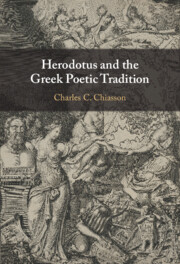Refine search
Actions for selected content:
279 results
Chapter 10 - Utopian Realism and Race
- from Part III - From Crisis to Hope: Utopian Aesthetics
-
-
- Book:
- The Cambridge Companion to British Utopian Literature and Culture since 1945
- Published online:
- 18 December 2025
- Print publication:
- 31 January 2026, pp 197-220
-
- Chapter
- Export citation
Conclusion
-
- Book:
- Marriage and the Moral Imagination
- Published online:
- 12 December 2025
- Print publication:
- 22 January 2026, pp 241-254
-
- Chapter
- Export citation
Six - Those Who Leave and Those Who Stay
-
- Book:
- Marriage and the Moral Imagination
- Published online:
- 12 December 2025
- Print publication:
- 22 January 2026, pp 178-207
-
- Chapter
- Export citation
13 - Conclusion
- from Part III - Mobilization
-
-
- Book:
- A Comparative Historical Sociology of Corruption
- Published online:
- 19 December 2025
- Print publication:
- 22 January 2026, pp 252-276
-
- Chapter
- Export citation
Introduction
-
- Book:
- Marriage and the Moral Imagination
- Published online:
- 12 December 2025
- Print publication:
- 22 January 2026, pp 1-28
-
- Chapter
- Export citation
Chapter 3 - Progressive Impulses
-
- Book:
- Law and Torture
- Published online:
- 17 December 2025
- Print publication:
- 18 December 2025, pp 68-97
-
- Chapter
- Export citation
Chapter 4 - Anamnesis and Nostalgic Temporality in David Jones’ The Anathemata
-
- Book:
- Nostalgia and National Identity in the British and Irish Modernist Epic
- Published online:
- 27 November 2025
- Print publication:
- 18 December 2025, pp 112-147
-
- Chapter
- Export citation
Chapter 6 - Sensing Suffering
-
- Book:
- Law and Torture
- Published online:
- 17 December 2025
- Print publication:
- 18 December 2025, pp 161-202
-
- Chapter
- Export citation
6 - Diasporic State-Building and Its Legacies
-
- Book:
- Diasporic State-Building
- Published online:
- 25 November 2025
- Print publication:
- 18 December 2025, pp 184-206
-
- Chapter
- Export citation

Law and Torture
- Widening the Apertures from the Doctrinal to the Critical
-
- Published online:
- 17 December 2025
- Print publication:
- 18 December 2025

Marriage and the Moral Imagination
-
- Published online:
- 12 December 2025
- Print publication:
- 22 January 2026
Introduction
-
- Book:
- Rebuilding Histories in the Roman World
- Published online:
- 23 November 2025
- Print publication:
- 11 December 2025, pp 1-42
-
- Chapter
-
- You have access
- HTML
- Export citation
4 - Becoming Distinct
-
-
- Book:
- The Cambridge History of Australian Poetry
- Published online:
- 19 November 2025
- Print publication:
- 11 December 2025, pp 84-99
-
- Chapter
- Export citation
Little Bangs on the Tombigbee: Chronologies of Emergence
-
- Journal:
- American Antiquity , First View
- Published online by Cambridge University Press:
- 10 December 2025, pp. 1-20
-
- Article
-
- You have access
- Open access
- HTML
- Export citation
Chapter 4 - From Joie to Blisse
-
- Book:
- The Joy of Love in the Middle Ages
- Published online:
- 20 November 2025
- Print publication:
- 04 December 2025, pp 102-136
-
- Chapter
- Export citation

Rebuilding Histories in the Roman World
- Architectural Restoration and Temporality from Augustus to Justinian
-
- Published online:
- 23 November 2025
- Print publication:
- 11 December 2025
Introduction
-
- Book:
- Herodotus and the Greek Poetic Tradition
- Published online:
- 04 November 2025
- Print publication:
- 06 November 2025, pp 1-10
-
- Chapter
-
- You have access
- HTML
- Export citation

Herodotus and the Greek Poetic Tradition
-
- Published online:
- 04 November 2025
- Print publication:
- 06 November 2025
Conclusion - Of Truth and Political Responsibility
-
- Book:
- Moral Autopsy
- Published online:
- 18 November 2025
- Print publication:
- 30 October 2025, pp 238-264
-
- Chapter
- Export citation
Portrait of a Martyr as a Young Man: Social Lives of Photographs in Revolutionary Egypt
-
- Journal:
- Comparative Studies in Society and History / Volume 68 / Issue 1 / January 2026
- Published online by Cambridge University Press:
- 24 October 2025, pp. 5-38
-
- Article
-
- You have access
- Open access
- HTML
- Export citation
